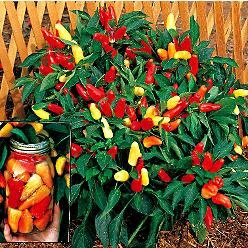The house we live in now was once my husband's grandparent's home. They survived the Great Depression by farming. Now, the barn and chicken coop are long gone, and the pasture has grown up with 50 year old trees. The only things left are the ancient apple trees visible through the woods to the east, some horse radish, a migrating berry patch with blackberries and red and black raspberries and random perennials lying dormant and hidden that pop up in weird places whenever we cut trees or remove brush.
Originally, there must have been two or three dozen apple trees in the orchard. Three or four still remain, "survive" would be too generous a term. There are three newer apple trees planted by the last occupants, and the Mulberry trees that I planted to replace the one my husband had to cut some 15 years ago. On the very edge of the woods, next to the garage, there is one old apple tree raging against the dying of the light. Only the top two or three feet show any signs of life, but each year it manages to put out half a dozen apples.

A couple of years ago I began to try to think of a way to save this tree. We believe it to be a Red Astrachan which is described as being second only to Winesap as the most widely sold Southern apple and one of the most widely distributed throughout the world. A very popular American apple first originating in Russia and brought to this country in 1870. Fruit medium sized and distinctly lobed in appearance. The thin, pale yellow skin in nearly covered with bright red and crimson splashes and stripes. White flesh is often tinged with red streaks and is coarse, crisp, moderately juicy and briskly subacid in flavor. Yup, that seems to be it.
If I were going to be casual about it, I could just order a Red
Astrachan sapling, but I'm worried that it wouldn't be the same. So, I found
Big Horse Creek Farm. They have devoted themselves to renovating old abandoned apple orchards and preserving these old apple varieties so we don't all have to eat Red Delicious (which I don't think are so delicious). What is so neat about them, is that you can send them a cutting from your tree, and they will graft it onto root stock for you, and in the fall send you a sapling to plant. Neat huh?
Last year I missed the deadline. Several times I had to run my husband off as he eyed that poor dead tree sticking out like a sore thumb on our woodline. Next spring, I promised, I will get scions off of it to graft. Well, I darn near missed the deadline this year too, but a quick email and they agreed to try a graft if I could get the scions to them before the end of that week. The next morning, I was standing under that tree wondering how on earth I was going to find anything alive on it. There was no way to reach the top by ladder, the only solution would have been climbing. I went around snapping every water shoot on the trunk up to about 7 feet. All but two were dead. Of the two I cut, only one looked like year old growth. The second already had tiny branches making it at least two years old. Still, I wrapped them both in damp paper towels and a giant Ziploc bag that had conveniently arrived in the mail containing a horse bridle. Recycle, reuse, renew!
Once I got to work, I scavenged a mailing tube from the back room, and took my trophies to the Post Office. I scratched an apologetic note for these two pitiful scions from a long dead tree, and sent them on their way. I was rewarded a couple of days later with an email stating they had gotten three grafts from them, and thought at least two would do OK. They will let me know in September if they have something to ship. Then it's up to me to keep them alive through the winter!






 I move quietly and drop the top of the double hung. They snort and jump a few feet, watching curiously as I take careful aim, than leap in renewed suprise at the sharp zing as the bee-bee pings them in the furry butt. I think my husband has hidden the one that I can pump up a dozen times because he's afraid I'll start putting holes in their worthless hides!
I move quietly and drop the top of the double hung. They snort and jump a few feet, watching curiously as I take careful aim, than leap in renewed suprise at the sharp zing as the bee-bee pings them in the furry butt. I think my husband has hidden the one that I can pump up a dozen times because he's afraid I'll start putting holes in their worthless hides!



 Rosa Bianca Eggplant: Also small, but a pretty pink on white.
Rosa Bianca Eggplant: Also small, but a pretty pink on white. 





 And the the old stand by: PaPaw's Jap. I alsways grow at least one of these, and a couple for Mom and Dad, and to give away.
And the the old stand by: PaPaw's Jap. I alsways grow at least one of these, and a couple for Mom and Dad, and to give away.